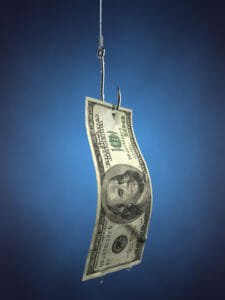
Not surprisingly, the Federal Trade Commission’s (FTC) top consumer complaint in 2014 was identity theft, which made up 13 percent of the 2.5 million consumer complaints received. It’s a rapidly growing issue, but not a new one. In fact, some of the FTC’s biggest busts in history have happened over the last two decades.
Take a look at the most notable scams:
Enron
As much as $78 billion in stock market value was wiped out by the fall of this energy company in 2001, causing thousands of lost jobs and billions of dollars in soured investments. In the wake of its bankruptcy, the Sarbanes Oxley Act of 2002 was created to protect investors from the threat of fraudulent accounting by corporations.
Enron’s scheme was building assets like a power plant, for example, and claiming projected profit on its books immediately, even though no profit was yet made. In the event the revenue was less than the projected amount, Enron would transfer those assets to an “off-the-books” corporation without taking the loss, and it would go unreported. This allowed the corporation to write off any loss without affecting its bottom line, making the corporation seem more profitable than it really was.
Bernard Madoff
Bernard (Bernie) Madoff and his so-called business, Madoff Securities, helped America reinforce the cautious phrase, “If it sounds too good to be true, then it probably is.” Having pulled off one of America’s biggest Ponzi schemes of all time, the investor duped thousands of people, stealing billions of dollars from unsuspecting clients who thought they were going to cash in on a promising investment. Instead, it turned out to be a nightmare of epic proportions for those investors.
Madoff’s scheme stretched across so many years and billions of dollars that a bust only occurred when his family turned him in. Initial claims of loss were about $77.3 billion, and the financial wreck he caused is still being sifted through today; since the initial bust, an additional $18.5 billion of fraudulent claims have been uncovered.
Madoff’s Ponzi scheme devastated so many, that a foundation was created to help victims.
Fannie Mae
As much as $400 million was paid to the U.S. Securities and Exchange Commission by Fannie Mae in 2006 to settle charges of inaccurate financial statements stemming from 1998 to 2004. Three of the residential mortgage credit corporation’s former top executives were charged for misleading investors about financial information regarding its holdings of higher-risk mortgage loans, which occurred during the financial crisis.
This led to the U.S. Government taking over the corporation in 2008.
What You Can Learn from Historic Scams
The government and financial industry have learned from scams of the past by implementing new legislation and keeping a more watchful eye for financial predators. As individuals, there’s also a lot we can learn from these examples.
Protecting your investments starts with protecting your data, such as past taxpayer information, which identity thieves can use to tap into your financial accounts. LifeLock is a great resource for ways to protect your assets and sensitive information, and the company’s website is also a good source for the latest in fraud threats and security news.
Research all future investments before writing the first check, and avoid any opportunities that pressure you into making a quick on-the-spot commitment. Finally, remember: if it sounds too good to be true, it probably is!

Recent Comments